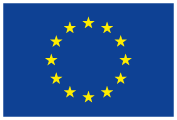Session V
Multiple Performative Mapping: a Way to Challenge Spatial Configurations
Chairs: David Hamers & Naomi Bueno de Mesquita (Design Academy Eindhoven & KU Leuven)
With the widespread adoption of mobile phones it is increasingly more common for people to alternate between the physical and the virtual, being ‘here’ and ‘there’ at the same time. Coupled with map apps – in which the map is continuously updated in correspondence to one’s movement, search history and preferences – new forms of encounters and co-presence in public spaces have emerged. It is unclear how the use of such apps – accompanied with an increasing amount of people withdrawing themselves to a so-called media-cocoon [i] – affects the public realm. What are the (social) implications of the blue dot and its undercurrent algorithm, on the collective experience of the city and collaborative practices in it?
The digitisation of maps and map apps have, on the one hand, enabled citizens to alter power relations through prosumer mapping [ii]. On the other hand, with the prefix ‘geo’ that is attached to nearly every media-related subject (with which people are traced, tracked and tagged) we are seeing the rise of corporate and political use of mapping through geo-googlisation and geo-exclusion; a location based awareness that is dictated and conditioned by algorithms. Thus, our surfing on the Web – based on the algorithmic undercurrent of Google– becomes authoritative for the way in which we navigate through space [iii]. In academia, the prefix ‘geo’ didn’t go unnoticed either. Where social sciences, media and cultural studies have undergone a spatial turn (locative media) geography has witnessed a media turn (mediated localities) (Thielmann, 2010:1).
There is, however, a critical and conceptual difference between the noun ‘map’ and the verb ‘mapping’. Where maps (the ones we generally use in our daily lives) tend to measure, notate and coordinate the world around us, mapping (the iterative process of making and remaking maps) opens the process up to participation. The question we’d like to address in this session is in what ways digital mapping – a spatial practice that has the potential to challenge or alter existing configurations of space – enables participation in public space.
We are interested in a wide range of cartographies and methodologies which include but are not limited to the following themes:
– Performative mapping (embodiment, materiality, temporality, real-time, delay, non-representational theory, subjectivity, gender, postcolonialism, posthuman etc.)
– Playful cartographies (real-time mapping, collective mapping, location-based games, psychogeography etc.)
– Mapping and algorithms (modes of inquiry, data collection, visualisation, validation, open source, logic, code etc.)
– Mapping, Actor Network Theory, and ethnography (human and non-human agency, mapping and community formation etc.)
– Mapping and urban design (public space design, wayfinding, navigational applications etc.)


